This post is sponsored by Azclear.
Here’s a breakdown of the science behind a cult Australian skincare nerd favourite: Azclear Medicated Lotion.
What Is Azelaic Acid?
Azelaic acid is an active skincare ingredient that’s great for a range of skin conditions, including mild to moderate acne and papulopustular rosacea. You’ll mostly find it in creams and gels, at concentrations between 15 and 20%.
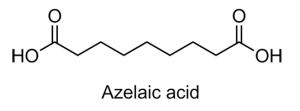
Azelaic acid occurs naturally. It’s produced by the fungus Pityrosporum ovale, and it’s also found in whole grains like barley and wheat. Humans also naturally produce it from fatty acids.
In Australia and many other countries, azelaic acid is regulated as a drug, so you’ll only find it in medicated creams (whether prescription or over-the-counter). This also means that azelaic acid-containing products are regulated much more carefully than non-drug cosmetics.
How Does Azelaic Acid Work?
Azelaic acid is pretty neat, in that it has a bunch of different ways of acting to help different skin concerns.
Azelaic Acid and Acne
It’s used as a treatment for mild to moderate acne:
- Azelaic acid is antimicrobial and helps to reduce Propionibacterium acnes bacteria, which contributes to acne. It doesn’t cause bacterial resistance, a potential outcome of antibiotic treatments.
- One of the other causes of acne is inflammation. Azelaic acid decreases inflammation in a few ways: it reduces inflammatory chemical messengers, and it acts as an antioxidant to help reduce inflammation-causing free radicals.
- Azelaic acid also reduces pore clogging by helping to reduce hyperkeratinisation. This is when skin cells shed abnormally fast, making them more likely to build up in hair follicles and clog them. This leads to blackheads and pimples.
Compared to other classic topical acne treatments, like tretinoin and benzoyl peroxide, azelaic acid has the advantage that it’s better tolerated and very safe, with fewer side effects.
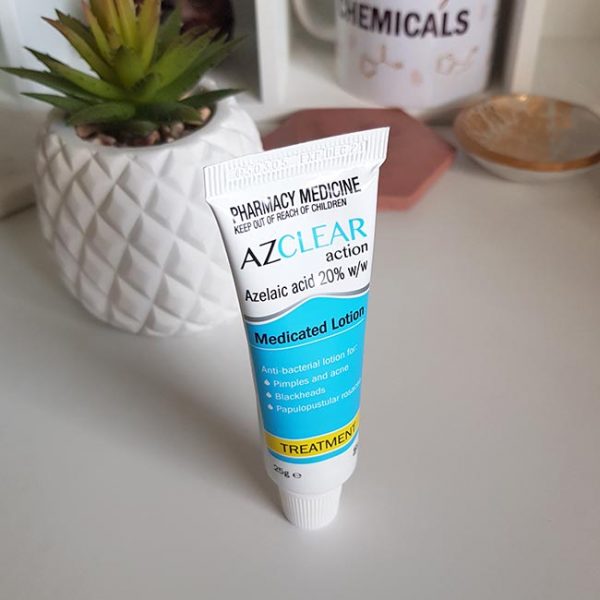
Azelaic Acid and Rosacea
Rosacea is a chronic skin condition that’s characterised by swelling of the blood vessels in the middle of the face, leading to redness and flushing. It’s often accompanied by stinging, papules and pustules (pimple-like bumps which occur in the papulopustular subtype of rosacea), and swelling of the cheeks and nose. Inflammation is a large part of rosacea, so azelaic acid’s anti-inflammatory properties make it a great treatment.
Related post: Common Rosacea Questions with Dermatologist Dr Estee Williams
Advantages of Azelaic Acid
Compared to other skincare ingredients for acne and rosacea, azelaic acid has a few distinct advantages.
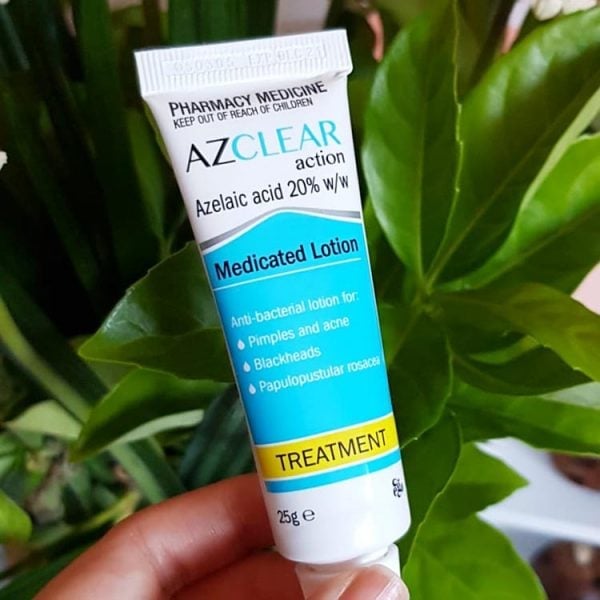
Firstly, there aren’t many side effects that come with using azelaic acid, unless your skin is very sensitive – it can give a little bit of stinging, peeling and redness, but this usually goes away after a few weeks. Since a lot of treatments for acne and rosacea are quite irritating, azelaic acid can be a good alternative here.
The fact that azelaic acid can reduce bacteria on the skin without causing resistance is also a big bonus. Antibiotic resistance is a growing problem with acne bacteria, so it’s good to have options apart from erythromycin and clindamycin.
Because it’s naturally present in your body, azelaic acid is considered safe to use during pregnancy.
How Do You Use Azelaic Acid?
Azelaic acid products are topical, which means you apply a small amount on affected skin. It’s recommended that you apply it twice a day, and use a gentle cleanser and moisturiser to help keep your skin in good condition during use. You should also use a high SPF sunscreen to help protect your skin from the sun’s UV rays.
It’s a good idea to patch test the product on your skin before you start using it. There can be a bit of a lag time expected with azelaic acid, so improvements might not be noticeable until after 4 weeks of use (if there isn’t an improvement after 8 weeks, talk to your pharmacist or doctor).
One azelaic acid product you can get in Australia is Azclear Medicated Lotion (RRP $14.99 for 25 g), which contains 20% w/w azelaic acid. It’s produced by Ego Pharmaceuticals, an Australian owned company that also produces QV and Sunsense products. Since it’s a pharmacy-only product, it’s recommended that you talk to a pharmacist before using Azclear Medicated Lotion.
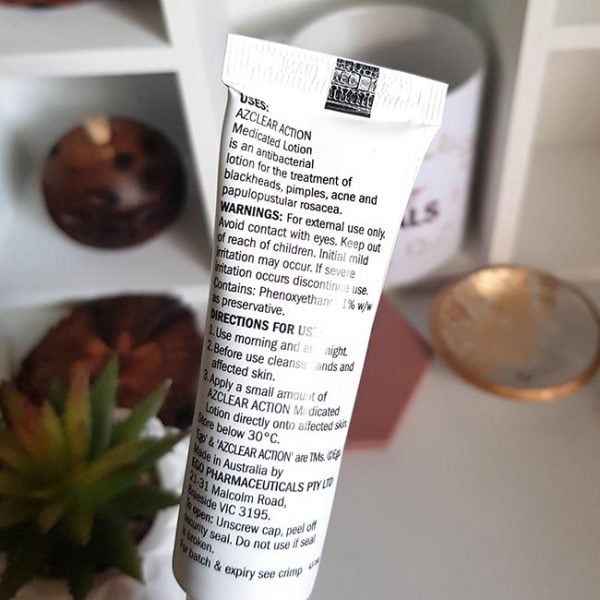
Azclear also have a range of skincare products designed to be used with Azclear Medicated Lotion. These products don’t contain azelaic acid, but they have a lot of nice ingredients that help keep your skin hydrated.
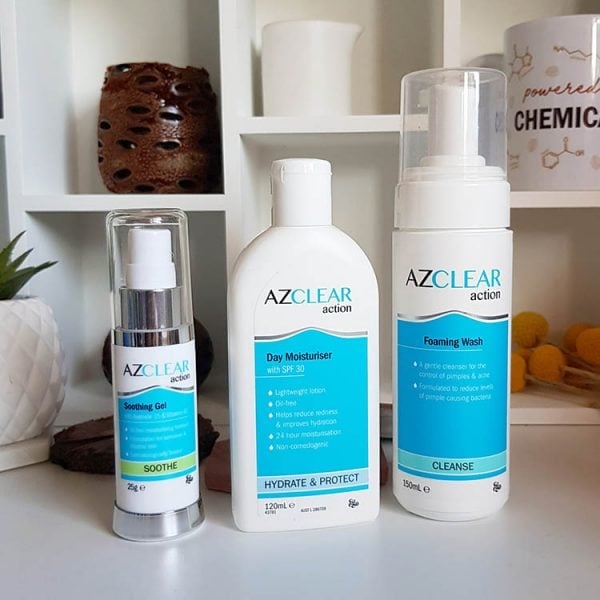
Azclear Action Foaming Wash (RRP $14.99 for 150 mL) is a gentle hydrating cleanser. It comes in a self-foaming pump that dispenses the cleanser as a foam, so it’s easy to spread while not being very stripping. It’s a very simple formula with lots of glycerin, a humectant moisturiser that’s great for keeping your skin hydrated without being greasy. There’s also antibacterial chlorhexidine and myrtrimonium bromide to support the antibacterial action of azelaic acid.
The cleanser left my skin feeling plump and soft, but not oily. It’s also fragrance-free to reduce irritation potential.
Ingredients: Aqua (Water), Glycerin, Decyl Glucoside, Disodium Cocoamphodiacetate, Phenoxyethanol, PVP, Myrtrimonium Bromide, Chlorhexidine Digluconate, Citric Acid, Disodium Phosphate.
Azclear Soothing Gel (RRP $19.99 for 25 g) is a gel moisturiser that comes in a convenient pump container. It contains Avemide 15, an oat kernel extract that helps to soothe and calm skin. It also has niacinamide (vitamin B3), which helps to improve skin tone and texture. The gel is very light and oil-free, so it doesn’t leave your skin greasy.
Related post: What Is Niacinamide and What Does It Do in Skincare?
Ingredients: Aqua (Water), Glycerin, Hamamelis Virginiana (Witch Hazel) Water, Cyclopentasiloxane, Cyclohexasiloxane, Disodium Lauriminodipropionate Tocopheryl Phosphates, Niacinamide, Paraffinum Liquidum, Avena Sativa (Oat) Kernel Extract, Xanthan Gum, Sodium PCA, Panthenol, Ammonium Acryloyldimethyltaurate/VP Copolymer, Citric Acid, Cetearyl Alcohol, Sodium Methylparaben, Sodium Propylparaben, Ceteareth-20, Menthol, Potassium Sorbate.
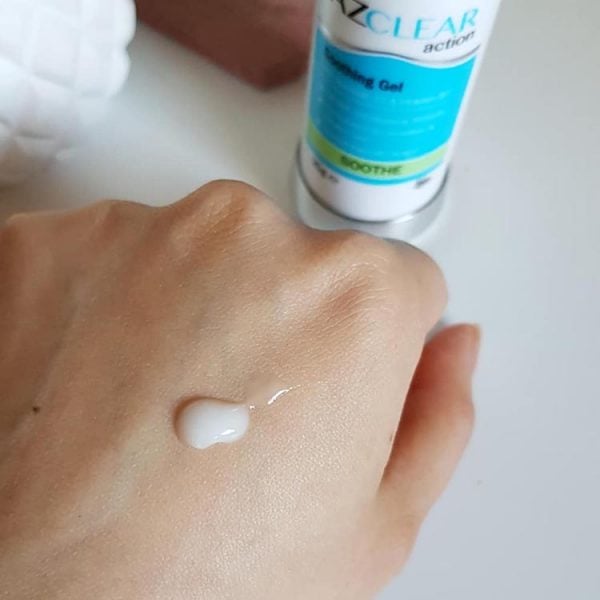
Azclear Day Moisturiser SPF 30 (RRP $17.99 for 120 mL) is a sun protective moisturiser, and it has a really fantastic texture. I’d say this is the best sunscreening product I’ve tried that’s available in physical stores in Australia. It’s very light and hydrating with a dewy finish, and offers broad spectrum protection against both UVA and UVB. It contains two of my favourite newer photostable sunscreen actives, Tinosorb S (bemotrizinol) and Uvinul A Plus (diethylamino hydroxybenzoyl hexyl benzoate), both of which protect against UVA (Tinosob S also protects against UVB).
Active ingredients (w/w): Octyl Methoxycinnamate 3.5%, Diethylamino Hydroxybenzoyl Hexyl Benzoate 1.5%, Bemotrizinol 1.3%
Related post: Why you should protect your skin from UVA (and how) (with video)
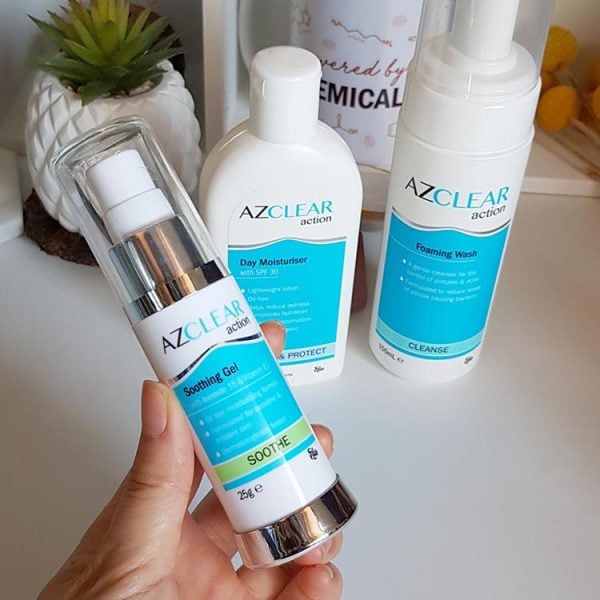
Disclaimers
- Azclear Medicated Lotion: Always read the label. Follow the directions for use. If symptoms persist, worsen or change unexpectedly, talk to your health professional.
- Azclear Daily Moisturiser SPF 30: Always read the label. Follow the directions for use. Avoid prolonged sun exposure and wear protective clothing, hats and eyewear to further reduce risk. Frequent re-application is required.
References
Rivero AL & Whitfeld M, An update on the treatment of rosacea (open access), Aust Prescr. 2018, 41, 20-24. DOI: 10.18773/austprescr.2018.004
van Zuuren EJ et al., Interventions for rosacea, Cochrane Database Syst Rev. 2015, CD003262. DOI: 10.1002/14651858.CD003262.pub5
Liu H et al., Topical azelaic acid, salicylic acid, nicotinamide, and sulphur for acne, Cochrane Database Syst Rev. 2014, CD011368. DOI: 10.1002/14651858.CD011368
Rajaratnam R et al., Interventions for melasma, Cochrane Database Syst Rev. 2010, CD003583. DOI: 10.1002/14651858.CD003583.pub2
This is a sponsored post; however, the opinions expressed are still my honest opinions. For more information, see Disclosure Policy.


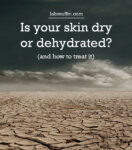


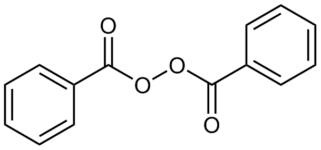
It’s the first time I’ve heard of azelaic acid. With acne, it’s usually BPO or Salicylic acid. Can it also be effective with hormonal acne?
Thanks in advance!
Could I replace salicylic acid with azelaic acid for the prevention of blackheads? Thank you!
I use it and find it works very well!
Ooh this is good. I used Paula’s choice for the azaleic acid but it’s expensive and hard to get and then The Ordinary, but it’s diappointing that their cream is so scented and siliconey. This is definitely worth a try
So I bought the cleanser and treatment cream. I have stopped using vitamin C and other acids (except ferrulic) until my skin heals. So cleansing, treatment cream, niacinamide and zinc, an antioxidant in the morning and moisturiser then sunscreen. Evening I double cleanse, and use rosehip oil instead of the antioxidant. My skin is clearing (I think the salicylic I was using was too harsh). A couple more weeks and I will test the salacylic again. Great products. Thanks Michelle and Ego
Can I use azelaic acid together with vitamin C in the morning?
It should be fine!
I’ve been using Skinoren 15% azelaic acid to try shift my pigmentation (off label usage?) and as an added bonus my skin is less pink and I haven’t had any pimples. I’m not breakout prone anyway but still occasionally get some. Kinda feel like azelaic acid is a magical ingredient at the moment haha. So many benefits and so few side effects!
I have heard about its benefits in treatment of rosacea, but never looked much into the ingredient before – very helpful.
Anne from Doctor Anne
I’ve tried the ego version of azelaic acid and found that a lot of piling was happening. I realised this product was causing it. What was I doing wrong?
I think it’s just how azelaic acid is – because it’s always used at such high percentages (15% or 20%), it tends to make the products very weirdly textured. Have you tried changing where in your routine you apply the azelaic acid, or rubbing it in less?
I have been using Azclear and la roche -posay to treat rosacea and it has incredibly heplful. Coming into summer I am concerned about using a rentiol and am considering swapping to Bakuchiol. The Moo Goo range includes both Bakuchiol and Arbutin and I was wondering if you would consider reviewing this range.
Thanks for this review! I’m loving the azclear lotion at 20%. I really like the spf texture, I do wish it’s a higher spf though. It says spf moisturiser, do you think it can be used as a stand alone spf or would you recommend additional stand alone spf on top and use this as a moisturiser with spf bonus?
It should be enough if the UV level isn’t stupidly high – SPF 30 is SPF 30, regardless of the type of product.
Hi, what is your opinion on using azelaic acid for hormonal acne? I have also heard some influencers suggest azelaic acid is good for hyperpigmentation – what do you think about this?
Is the Azclear medicated lotion formulation meant for daily use or as a spot treatment?
Thanks 🙂
I haven’t seen much about it for hormonal acne. It can help with hyperpigmentation though. Azclear is formulated for all-over twice-daily use.
Thank you for this detailed breakdown of Azclear Azelaic Acid Medicated Lotion! I’ve been curious about azelaic acid and its benefits for my skin concerns. It’s great to know how it can help with acne and pigmentation. Your explanation of how to incorporate it into my routine was super helpful. I’m definitely going to give it a try!